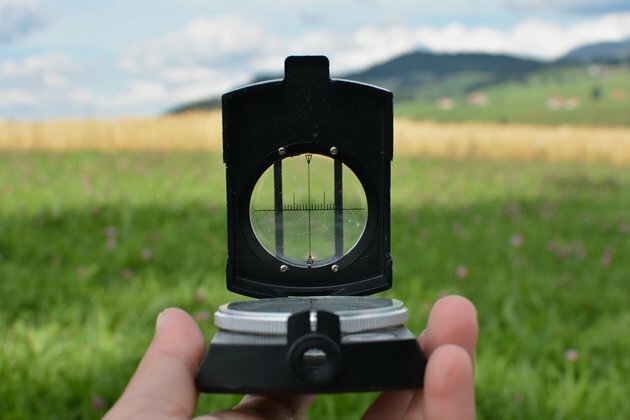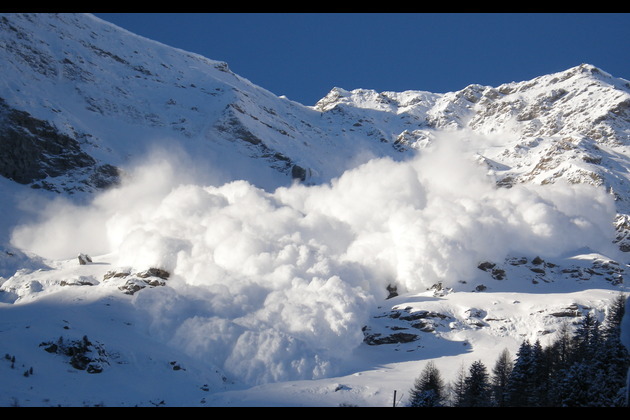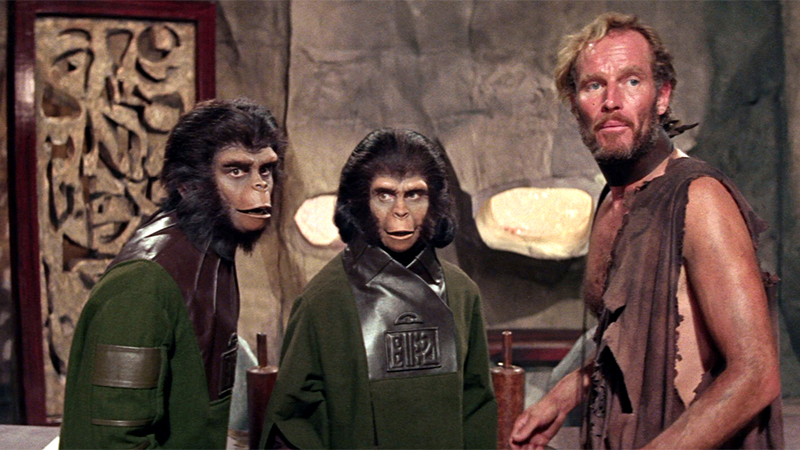Explainer: what happens when magnetic north and true north align?
The Conversation
17 Sep 2019, 03:47 GMT+10

At some point in recent weeks, a once-in-a-lifetime event happened for people at Greenwich in the United Kingdom.
Magnetic compasses at the historic London area, known as the home of the Prime Meridian, were said to have pointed directly at the north geographic pole for the first time in 360 years.
This means that, for someone at Greenwich, magnetic north (the direction in which a compass needle points) would have been in exact alignment with geographic north.
Geographic north (also called "true north") is the direction towards the fixed point we call the North Pole.
Magnetic north is the direction towards the north magnetic pole, which is a wandering point where the Earth's magnetic field goes vertically down into the planet.
The north magnetic pole is currently about 400km south of the north geographic pole, but can move to about 1,000km away.
Magnetic north and geographic north align when the so-called "angle of declination", the difference between the two norths at a particular location, is 0.
Declination is the angle in the horizontal plane between magnetic north and geographic north. It changes with time and geographic location.
On a map of the Earth, lines along which there is zero declination are called agonic lines. Agonic lines follow variable paths depending on time variation in the Earth's magnetic field.
Currently, zero declination is occurring in some parts of Western Australia, and will likely move westward in coming years.
That said, it's hard to predict exactly when an area will have zero declination. This is because the rate of change is slow and current models of the Earth's magnetic field only cover a few years, and are updated at roughly five-year intervals.
At some locations, alignment between magnetic north and geographic north is very unlikely at any time, based on predictions.
The ever-changing magnetic poles
Most compasses point towards Earth's north magnetic pole, which is usually in a different place to the north geographic pole. The location of the magnetic poles is constantly changing.
Earth's magnetic poles exist because of its magnetic field, which is produced by electric currents in the liquid part of its core. This magnetic field is defined by intensity and two angles, inclination and declination.
The relationship between geographic location and declination is something people using magnetic compasses have to consider. Declination is the reason a compass reading for north in one location is different to a reading for north in another, especially if there is considerable distance between both locations.
Read more: New evidence for a human magnetic sense that lets your brain detect the Earth's magnetic field
Bush walkers have to be mindful of declination. In Perth, declination is currently close to 0 but in eastern Australia it can be up to 12. This difference can be significant. If a bush walker following a magnetic compass disregards the local value of declination, they may walk in the wrong direction.
The polarity of Earth's magnetic poles has also changed over time and has undergone pole reversals. This was significant as we learnt more about plate tectonics in the 1960s, because it linked the idea of seafloor spreading from mid-ocean ridges to magnetic pole reversals.
Geographic north
Geographic north, perhaps the more straightforward of the two, is the direction that points straight at the North Pole from any location on Earth.
When flying an aircraft from A to B, we use directions based on geographic north. This is because we have accurate geographic locations for places and need to follow precise routes between them, usually trying to minimise fuel use by taking the shortest route. All GPS navigation uses geographic location.
Read more: Five maps that will change how you see the world
Geographic coordinates, latitude and longitude, are defined relative to Earth's spheroidal shape. The geographic poles are at latitudes of 90N (North Pole) and 90S (South Pole), whereas the Equator is at 0.
An alignment at Greenwich
For hundreds of years, declination at Greenwich was negative, meaning compass needles were pointing west of true north.
At the time of writing this article I used an online calculator to discover that, at the Greenwich Observatory, the Earth's magnetic field currently has a declination just above zero, about +0.011.
The average rate of change in the area is about 0.19 per year, which at Greenwich's latitude represents about 20km per year. This means next year, locations about 20km west of Greenwich will have zero declination.
It's impossible to say how long compasses at Greenwich will now point east of true north.
Regardless, an alignment after 360 years at the home of the Prime Meridian is undoubtedly a once-in-a-lifetime occurrence.
Author: Paul Wilkes - Senior Research Geophysicist, CSIRO 
 Share
Share
 Tweet
Tweet
 Share
Share
 Flip
Flip
 Email
Email
Watch latest videos
Subscribe and Follow
Get a daily dose of Australian Herald news through our daily email, its complimentary and keeps you fully up to date with world and business news as well.
News RELEASES
Publish news of your business, community or sports group, personnel appointments, major event and more by submitting a news release to Australian Herald.
More InformationInternational
SectionLee Jae-myung leads South Korea election race after amazing comeback
SEOUL, South Korea: Lee Jae-myung, a liberal South Korean politician, is leading in the polls ahead of the June 3 snap presidential...
Mud and ice engulf evacuated Swiss village in Alps disaster
GENEVA, Switzerland: A massive glacier collapse in the Swiss Alps sent a torrent of ice, mud, and rock crashing into the evacuated...
Critics warn Erdogan’s plan may extend rule beyond 2028
ANKARA, Turkey: Turkish President Recep Tayyip Erdogan said this week that he has appointed a group of legal experts to begin drafting...
Chemical plant blast in eastern China kills 5, injures 19; 6 missing
BEIJING, China: Six people are still missing and rescue teams continued their search on May 28 after a powerful explosion at a chemical...
Rio beach rules to change starting June 1, says mayor
RIO DE JANEIRO, Brazil: Starting June 1, Rio de Janeiro's Mayor Eduardo Paes has issued a new set of rules for the city's beaches that...
US scraps CDC COVID shots for healthy children, expecting mothers
WASHINGTON, D.C.: In a significant shift to federal vaccine guidance, the U.S. government will no longer recommend routine COVID-19...
Sydney
SectionThree boys, 14, 15 and 15 charged with assault and robbery at Barangaroo
SYDNEY, NSW, Australia - A teenage boy has been admitted to hospital, while three younger boys have been arrested, charged, and detained...
Wanted Queenslander Charged After Loaded Gun and Drugs Found in BMW
SYDNEY, NSW, Australia - A 45-year-old Queensland man has been charged after police allegedly discovered a loaded revolver, a prohibited...
Asia through the ages, penning by Barry Pearton
In the early 1980s, after witnessing opportunities in Asia, Barry Pearton saw a clear gap in Australia's media market. Without nothing...
South Africa to play against Zimbabwe ahead of WTC final against Australia
New Delhi [India], May 31 (ANI): South Africa will lock horns with Zimbabwe in a four-day warm-up match from June 3 at the Arundel...
Virat Kohli followed his heart in retiring from Tests, says AB de Villiers
Mumbai (Maharashtra) [India], May 31 (ANI): Former South African cricketer AB de Villiers reacted to Virat Kohli's decision to retire...
Ponting predicts Australia's WTC final playing XI; Labuschagne at top, no place for Konstas
New Delhi [India], May 30 (ANI): Former Australia captain Ricky Ponting picked his Baggy Greens playing XI for their upcoming World...













